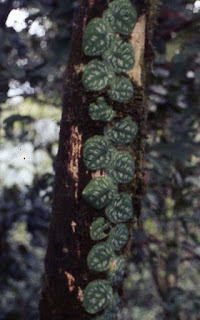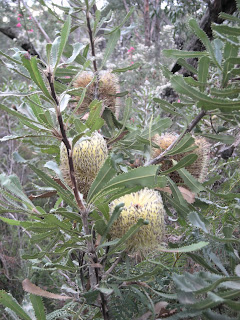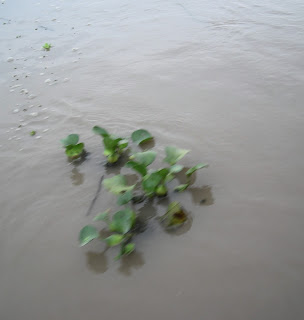 |
| California poppy in California grasslands |
 |
| Tortuguero National Park Costa Rica |
Whether the plant is grown as a house plant or raised for its fruit or planted as a shrub to brighten the yard, it has a home range somewhere where it can be found growing naturally.
(There are a few domesticated plants whose the wild relative has gone extinct, but those are exceptional cases and today I want to talk about the vast majority of the world's 330,000 species of plants.)
Where plants are native they don't need human help to grow and reproduce. There, they can be found growing in odd locations--along a fence, on an eroding slope--because they got there by themselves.
 |
| Coreopsis in the prairie |
 |
| Coreopsis in Iowa prairie |
I grow coreopsis (Coreopsis spp., Asteraceae, sunflower family) from seeds I buy, but here it is, at home in a prairie in Iowa.
 |
| Saguaro in Arizona |
 |
| Saguaro in Arizona |
Even if you’ve seen giant saguaro cacti (Carnegiea gigantea, cactus family, Cactaceae) in the western movies, they are awe-inspiring in their homeland. On a visit the American Southwest, to walk up to a saguaro where it towers above and realize that it belongs there is amazing. This strange form is alive and self-sustaining. It sprouts, reproduces and dies, leaving offspring that fit that environment equally well and has done so for millennia.
The world has major geographic regions, where plants have evolved separate from the other ones: Eurasia, Africa, North America, South America, Australia. Ordinary plants in each region are strange and exotic outside those regions. In addition, living in mountains or deserts or forests or plains has shaped plants good at surviving in one but not so good in the others. So while Australians can see redwoods (Sequoia sempervirens, Cupressaceae, cypress family) in botanical gardens and Americans can see eucalypts (Eucalyptus globulus, Australians say blue gum, myrtle family, Myrtaceae) planted in California, redwoods grow natively on the coast and blue gums are at home in Australia.
 |
| Eucalytus tree, Victoria Australia |
 |
| Auricarias in New Zealand |
 |
| Pines in California |
 |
| Plant in Proteaceae, Victoria, Australia |
In 2008 I got very excited seeing my first plants in the family Proteaceae in the wild. The Proteaceae are a diverse family of plants, with their greatest numbers in South Africa but a few in South America, Australia and New Zealand. The flowers are quite distinctive and they are increasingly showing up as cut flowers in the US. But there they were in nature, wild in Australia.
In my front window is a laurel (bay, Laurus nobilis) plant that I have carefully nurtured. This is the plant of laurel wreaths, used to crown victors in Roman games. It is also the source of bay leaves for cooking--essential in my spaghetti. Looking out the window on the train from Florence, there were all kinds of small laurels growing as weeds along the fence.
 |
| laurel, Laurus nobilis, growing along railroad fence, Tuscany, Italy |
 |
| water hyacinth in the Amazon River |
 |
| water hyacinth, Eichornia crassipes, Peruvian Amazon |
I was touring the Peruvian Amazon and there, drifting down the river past the ship were my water hyacinth and water lettuce. Wild, abundant and at home.
What is native where I live that other people might enjoy seeing in their native habitat? Sunflowers, cacti, aspen, and multi-colored columbine, to name a few.
 |
| wild Opuntia flowering in the high plains prairie, Boulder Colorado |
 |
| wild sunflowers, Helianthus annuus by the roadside, Ogallala Nebraska |
Comments and corrections welcome!
Kathy Keeler, A Wandering Botanist
Kathy Keeler, A Wandering Botanist
More at awanderingbotanist.com
Join me on Facebook

aa
ReplyDelete